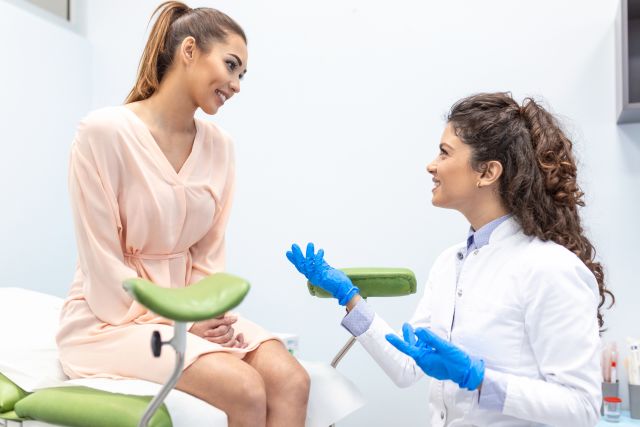Updated on May 10, 2023.
Thanks to the HPV vaccine—which protects against the virus that causes most cervical cancers—the rates of cervical cancer in the United States showed a steep decline between 2012 and 2019 in women ages 20-24, according to data from the American Cancer Society (ACS).
While that’s certainly cause to celebrate, it’s still important to follow guidelines for Pap smears. About 13,000 new cases of cervical cancer are still diagnosed each year, and of these people, about 4,000 die from the disease. Because cervical cancer often has no symptoms until it becomes advanced, getting screened early is critical, according to the Centers for Disease Control and Prevention (CDC).
To screen for cervical cancer, the American College of Obstetricians and Gynecologists (ACOG) recommends a Pap smear every three years for people between ages 21-29. People between 30-65 may continue getting a Pap every 3 years, can switch to co-testing with a Pap and an HPV test every 5 years, or have HPV testing alone every five years.
Pap test results are usually described as "normal" (no changes in cervical cells), "unclear" (cervical cells might be abnormal) or "abnormal" (cell changes found). Relatively few Pap smear results are abnormal. “It's actually not that common," explains Glenn Bigsby, DO, a gynecologic oncologist at Presbyterian/St. Luke's Medical Center and Pediatrix Obstetrix Medical Group of Colorado in Littleton. "Probably about 10 to 15 percent of patients in general will have an abnormal Pap smear during their lifetime.”
If you do get “abnormal” results from your Pap test, it means that some cells from your cervix look different from healthy cells. While it does not necessarily mean that you have cancer, more monitoring, testing or treatment may be needed. Here are some possible reasons for abnormal Pap test results:
- HPV. The biggest risk factor for an abnormal Pap smear is HPV, a sexually transmitted infection that can lead to cervical cancer, says Dr. Bigsby. Getting the HPV vaccine—which experts recommend for all young people ages 9 through 26—can "significantly decrease your risk of getting HPV, and/or an abnormal Pap smear," he explains.
- Infection. Sometimes a vaginal yeast infection will throw off a Pap test result. “The test is not designed to diagnose infections," says Bigsby. "They’re just sometimes found at the time of the Pap smear.” If you have a yeast infection, your doctor can recommend appropriate treatment.
- Menopause. People in menopause may have abnormal Pap results caused by vaginal dryness or thinning of the walls of the vagina or cervix. These changes are triggered by the loss of estrogen during menopause and are not related to HPV or cancer.
If your Pap results are abnormal—or even unclear—your healthcare provider (HCP) may do one or more of these tests to determine if there are precancerous or cancerous cells:
- Repeat Pap. Sometimes a Pap smear shows irregular cells called atypical squamous cells of undetermined significance, or ASC-US. Often these cells are caused by inflammation, and they'll soon clear up on their own. “We’ll repeat those Pap smears in a short amount of time, just to be sure," Bigsby says.
- HPV test. This test can be done either as part of regular screening, or if your Pap shows irregular cells. The test looks for pieces of HPV DNA within cervical cells, and the cells are collected the same way as the Pap—in fact, they may be done with the same sample.
- Colposcopy. “A colposcopy is a more directed diagnosis of precancerous cells,” says Bigsby. The procedure takes 10 to 20 minutes in your HCP’s office. Just like a pelvic exam, you’ll lie on an exam table with your feet propped on foot rests. Your HCP will position a speculum in your vagina to view and examine your cervix with the help of a magnifying device called a colposcope. Your HCP will also swab a solution on your cervix to highlight irregular cells, which could cause some stinging or tingling.
- Biopsy. There are several types of cervical biopsies, but all involve taking a sample of tissue to check for signs of developing cancer (some people may feel some pressure or cramping during the test). The biopsy can confirm if precancerous or cancerous cells are present. If so, these cells will need to be treated either by excision (removal of cells for further evaluation in the lab) or ablation (destruction of cells either by freezing or with lasers, without further evaluation in the lab). Afterwards, you will need to continue routine cervical cancer screening. Depending on the type of cells found on biopsy, you may need more frequent screening or further treatment.






